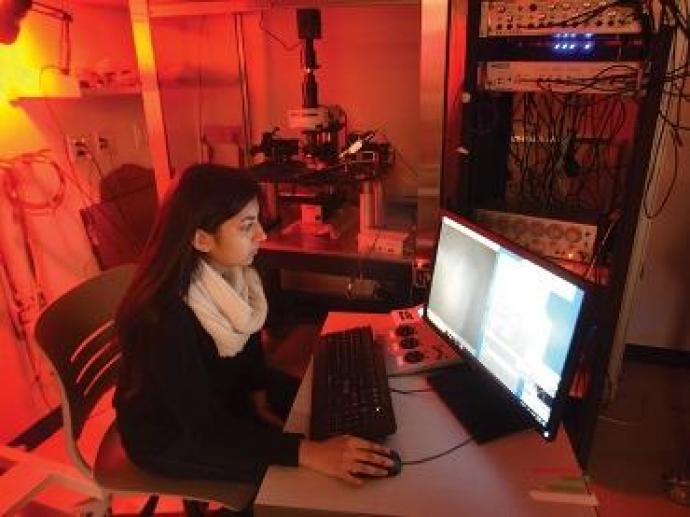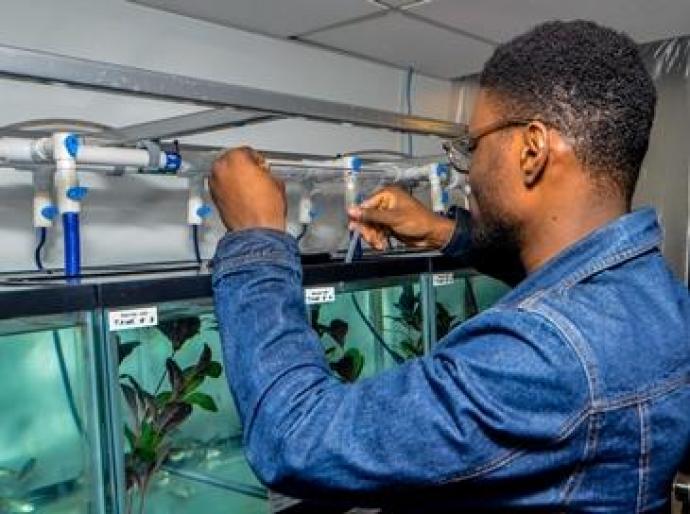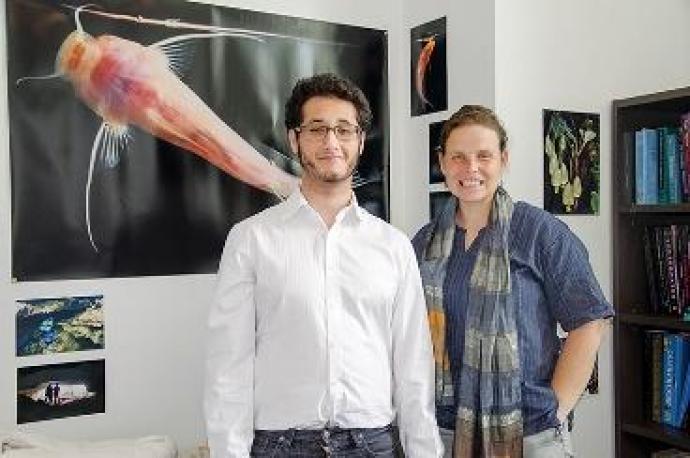Undergraduate Ecosystems: Underwater with Blind Cavefishes

Neuroecology of Unusual Animals Laboratory
How do nervous systems evolve and adapt to extreme environments? The Soares lab uses neuroethological and ecological methods to understand the evolution of neural adaptation, examining the evolution of circuitries, behavioral adaptation and sensory novelty. This integrative approach links a detailed characterization of the environment with the anatomy and function of neural systems within a phylogenetic context. Soares and her students study the blind cavefish Astyanax mexicanus, found in central Mexico, which is born with eyes and lenses that disintegrate in early development. They compare these fish to their closet living ancestors, Astyanax that live on the surface. The two fish can still interbreed.

“In my lab, students look at development from a number of perspectives, from morphology, to physiology, to behavior," says Daphne Soares, assistant professor of biology and the lab's director. "We explore small developmental changes to understand the big picture of evolution. We can study, for example, various aspects of how neural circuits have evolved from the ancestral surface form to a derived cave form.”

CAN BLIND SPECIES COMPREHEND SIGHT?
Soares expects that cave and surface fish have the same neural coding for vision as larvae; the lab is investigating how it changes as fish become blind, raising a question: If scientists could reverse the process, would an animal destined to be blind be able to comprehend sight? “I’m looking at the brain function that interprets sight, measuring calcium levels in the cells that might permit vision to assess their activity,” says Shaiza Ali ’18. So far, it appears that surface fish begin to modulate visual stimuli, neurons firing with a coherent code, while cavefish continue to exhibit a lot of spontaneous activity.

HOW CAVEFISH TRADE EYESIGHT FOR SURVIVAL
Detecting water flows is advantageous to a blind fish, because the environment, prey and mates create disturbances the cavefish can interpret. SAm Kolawole ’18 looks at the development of the sensory cells called neuromasts in both forms of the fish. These cells, located on the surface of both young fish and adult cavefish, are more concentrated in the cavefish, giving it a high level of water flow processing capability. He’s trying to understand at what point this difference appears in development. “I map each neuromast using a fluorescence microscope to create a map that changes with age.”

DEPICTING THE EVOLUTION OF SIGHTLESS FISHES
Alex Bradbury-Wallad ’16, a digital design major with a passion for science, received an offer he couldn’t refuse: the chance to collaborate on media projects with Soares, a scientist intrigued in turn by the communicative power of art and design. He noted, “I still love biology, and I’m especially interested in extremophile species.” Based on CT scans, he constructed animated sketches of cavefish brains and a series of 3D models illustrating the evolution of sightless fishes in dark caves. The pair followed up with an educational video showing how cavefishes adapted to their extreme environments by losing their eyes and pigmentation.